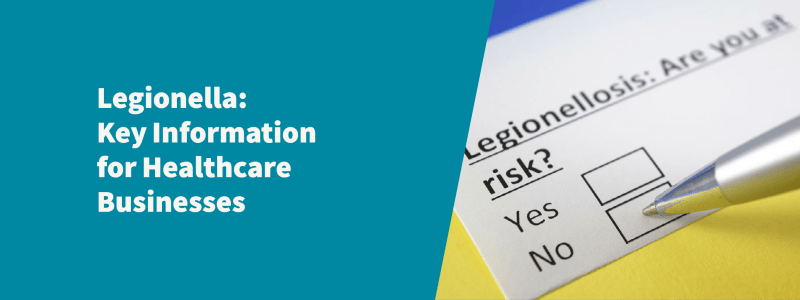Legionella contamination is a risk in any environment that uses water systems.
That being said, it’s safe to say that the risk of Legionella concerns most businesses across the UK. However, the dangers of Legionnaire’s disease are significantly increased in healthcare premises, due to the condition of residents, and it’s the responsibility of facility owners and employees to ensure the risk is controlled.
Who is at greater risk?
- Anyone over 45 years old
- People with impaired immune systems
- Those suffering from respiratory, kidney, lung or heart problems
- People with diabetes
- Smokers
- Heavy drinkers
All healthcare businesses must be particularly cautious. It’s vital to ensure that Legionella risk assessments are adequate enough to keep people safe and well. To find out more about Legionella, read our complete lowdown on Legionnaire’s Disease.
Don’t be fooled into thinking that because healthcare premises are generally sanitary, they are exempt from outbreaks. Legionella control is about monitoring water systems, not simply keeping the place hygienic.
Who should be concerned about Legionella?
Legionella is a greater risk to large buildings (three stories or more), but poses a threat to any building with portable and non-portable water systems. Due to the nature of healthcare facilities, all healthcare business owners should be aware of Legionella control, including:
- Dentists – contamination can occur in the pipework of dental equipment
- General Practices & Clinics – taps and plumbing systems are at risk
- Hospitals & Hospices – many types of water systems must be efficiently monitored
- Nursing Homes – the elderly and sick are particularly susceptible
Legionnaire’s disease is at its most fatal in healthcare facilities as a result of the immunocompromised occupants. Control measures should be part of day-to-day operations in these types of premises, whether residents are newborn babies or elderly people – everyone is susceptible.
The Royal United Hospital case
In July 2015, 68-year-old Terry Brooks died from Legionnaire’s disease. Brooks was an inpatient at Bath’s Royal United Hospital (RUH) and caught the fatal bacteria from the water supply to his ward. This follows a 2004 incident at the same hospital, in which 37-year-old Daryl Eyles contracted the disease and died. In the case of Eyles, after admitting liability, the hospital was fined £80,000.
Following an inquest into Brooks’ death, the HSE prosecuted the hospital under Section 3(1) of the Health and Safety at Work etc. Act (1974) – finding that risk management procedures were inadequate for protecting patients.
The RUH pleaded guilty to breaching health and safety law again. Sentencing will take place in a Crown court and it’s possible for a fine of millions of pounds to be imposed on the hospital.
The RUH provides two examples highlighting the hundreds of cases of Legionnaire’s disease posing a threat to the healthcare environment each year. As the risk of Legionella is foreseeable, healthcare premises are wholly responsible for taking steps to prevent its contamination – punitive measures take this fact into account.
A breakdown of steps for Legionella healthcare management
Water safety plans, once implemented, must be properly managed – keeping on top of control schemes helps to safeguard patients, staff and visitors and will allow healthcare premises to avoid unnecessary risks of infection.
These six simple steps will help to keep healthcare businesses safe from Legionella.
1. Update risk assessments –
Make sure you assess the risks to your building annually (or at least every two years)
2. Keep records of safety measures –
Log your compliance, including up-to-date water system schematics and flushing schedules
3. Maintain water temperatures above 60°C for hot water and below 20°C for cold water –
A temperature control regimen is vital to avoid Legionella outbreaks
4. Keep faucets clean –
Descale shower heads and taps to avoid bacteria back-up
5. Notify employees of procedures –
Everyone working in the facility is responsible for day-to-day risk management
6. Sample testing –
Arrange a testing schedule to keep on top of water systems (your risk assessment can determine how frequently to sample water)
Did you know? If you’re a healthcare organisation, you should enlist the expertise of a professional water treatment provider. At Direct365, we’re fully aware of legislation and best practice methods when it comes to Legionella.
for more information on our LCA-approved services (we can even give you a free quote over the phone today!).
Back


